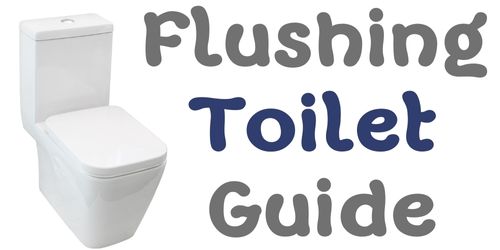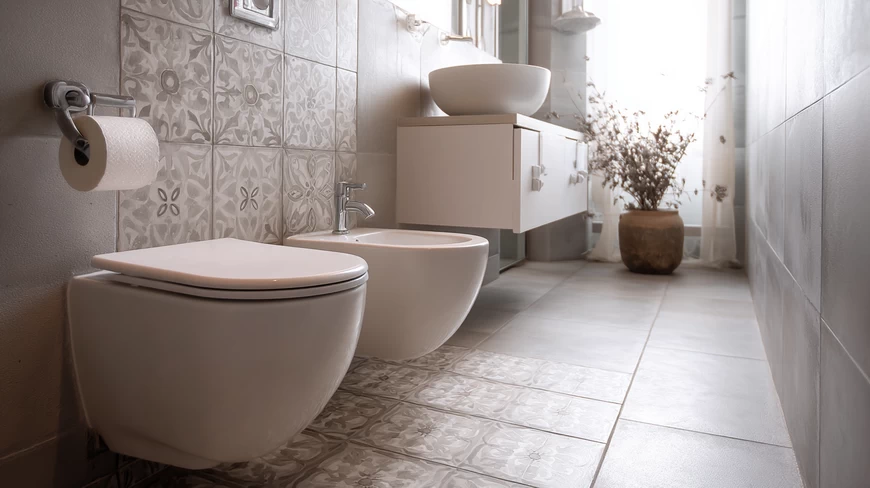When shopping for a new toilet, one of the first decisions you’ll need to make is whether to choose a one-piece or a two-piece model. This common dilemma—One-Piece vs. Two-Piece Toilets—goes beyond just appearance. While both types perform the same basic function, their differences in design, installation, maintenance, and overall aesthetics can greatly influence your bathroom experience.
This comprehensive guide will walk you through the pros, cons, and key considerations of one-piece versus two-piece toilets, helping you decide which option best suits your home, budget, and lifestyle.
Before diving into the comparison, let’s clarify the two types:
-
One-Piece Toilets: These feature a seamless design where the tank and bowl are fused into a single unit. The integrated structure gives them a sleek, modern appearance and eliminates joints where dirt can accumulate.
-
Two-Piece Toilets: These consist of a separate tank and bowl that are bolted together during installation. This modular design is the traditional standard in many homes, offering versatility and ease of handling.
One-Piece Toilets: Features and Benefits
Pros
-
Sleek, Modern Design: The seamless construction creates a clean, contemporary aesthetic that suits upscale or minimalist bathrooms. Models like the Kohler Santa Rosa or Toto Ultramax II are prime examples of elegance in simplicity.
-
Easier to Clean: With no seam between tank and bowl, there’s less chance for grime, mold, or bacteria to build up. A quick wipe-down keeps the exterior spotless, saving time on chores.
-
Compact Profile: Many one-piece toilets have a lower tank height or slimmer silhouette, making them ideal for bathrooms with limited vertical or horizontal space.
-
Durability: The single-unit construction can feel sturdier, as there’s no joint to loosen over time. High-quality vitreous china ensures long-term resilience.
-
Premium Appeal: Often found in luxury homes, one-piece models elevate the bathroom’s perceived value, which can be a plus for resale.
Cons
-
Higher Cost: One-piece toilets typically start at $200–$300 and can exceed $1,000 for high-end models with smart features, compared to budget two-piece options under $150.
-
Heavier Weight: Weighing 80–120 pounds or more, they’re cumbersome to transport and install, often requiring two people or professional help.
-
Repair Challenges: If the tank or bowl is damaged, you may need to replace the entire unit, as parts aren’t interchangeable like in two-piece models.
-
Limited Availability: Fewer one-piece options exist compared to two-piece, which can restrict choices in terms of colors, flush systems, or bowl shapes.
Two-Piece Toilets: Features and Benefits
Pros
-
Budget-Friendly: Prices start as low as $100 for reliable models like the Glacier Bay 2-Piece or American Standard Cadet, making them accessible for most budgets.
-
Easier Installation: The separate tank and bowl (typically 40–60 pounds combined) are lighter to carry and maneuver, ideal for DIYers. You can install the bowl first, then attach the tank, reducing strain.
-
Flexible Repairs: If the tank cracks or the flush valve fails, you can replace just one component without swapping the entire toilet, saving money over time.
-
Wide Variety: Two-piece toilets come in countless configurations—round or elongated bowls, standard or Comfort Height, gravity or dual flush—offering more options to match your needs.
-
Standard Fit: Their traditional design fits most plumbing setups (e.g., 12-inch rough-in), making them a safe choice for replacements in older homes.
Cons
-
More Cleaning Effort: The seam where the tank meets the bowl can trap dirt and germs, requiring extra scrubbing or a toothbrush to keep clean.
-
Less Modern Look: While some models like the Kohler Highline Classic have refined styling, two-piece toilets often lean traditional, which may clash with sleek, contemporary décors.
-
Potential for Leaks: The tank-to-bowl connection, secured by bolts and a gasket, can loosen or wear out, leading to minor leaks if not maintained.
-
Larger Footprint: Some two-piece models have bulkier tanks, taking up more space than compact one-piece alternatives.
Key Considerations for Choosing
-
Budget: If cost is a priority, two-piece toilets offer better value, especially for basic or high-traffic bathrooms (e.g., kids’ baths). One-piece models are worth the splurge for master suites or guest rooms where aesthetics matter.
-
Installation: DIYers will find two-piece toilets easier to handle—lighter components and simpler assembly mean less risk of damage. One-piece toilets may require professional installation ($100–$300), especially in tight spaces.
-
Maintenance: For busy households or rentals, one-piece toilets reduce cleaning time. If you’re comfortable with routine upkeep, the two-piece’s seam isn’t a dealbreaker.
-
Space and Style: Measure your bathroom carefully. One-piece toilets often save an inch or two in depth or height, ideal for small spaces or low ceilings. Two-piece models work well in larger bathrooms where their classic look blends in.
-
Longevity and Repairs: Two-piece toilets are easier to repair (e.g., replacing a $20 flush valve), while one-piece models may need full replacement for major issues, hiking long-term costs.
-
Flush Performance: Both types support advanced flush systems (gravity, pressure-assisted, dual flush), so focus on the specific model’s MaP score (800+ grams for strong flushing) rather than the structure.
Additional Tips for Decision-Making
-
Test in Showrooms: Visit a home improvement store to compare the feel of one-piece versus two-piece models. Sit on Comfort Height options and check tank accessibility.
-
Check Plumbing Compatibility: Confirm your rough-in (12 inches is standard) and ensure water supply lines align. Two-piece toilets are more forgiving for older setups.
-
Consider Seats Separately: Many toilets exclude seats, so budget $20–$100 for a soft-close or bidet-compatible option. One-piece models often pair better with sleek seats to match their vibe.
-
Read Reviews: Look for feedback on durability, flush power, and installation ease. Sites like Home Depot or Amazon reveal real-world quirks (e.g., loose bolts on two-piece models).
-
Factor in Warranty: Most brands (Kohler, Toto, American Standard) offer 1–5-year limited warranties. One-piece toilets may have stricter terms due to their integrated design.


Leave a Reply